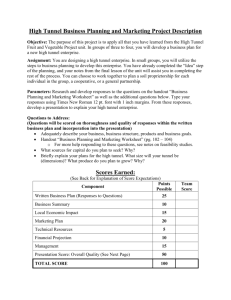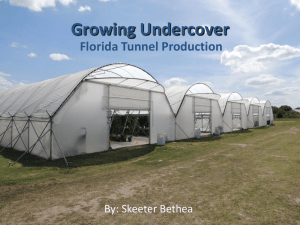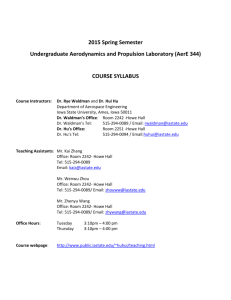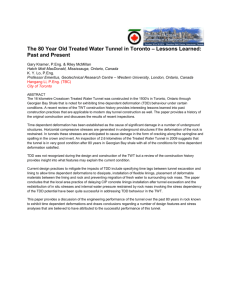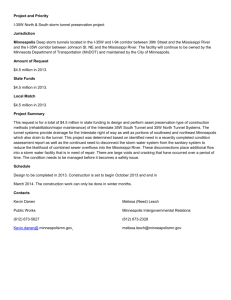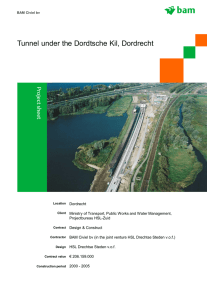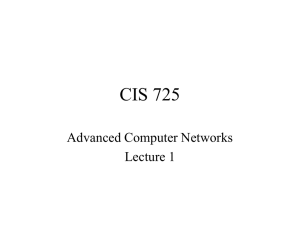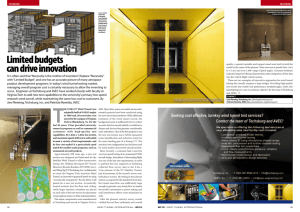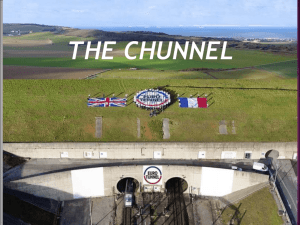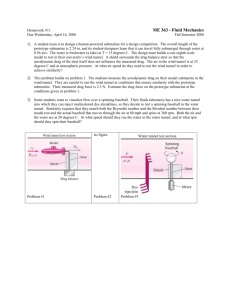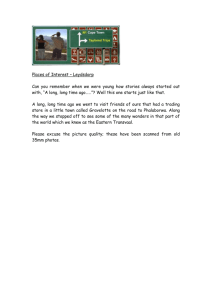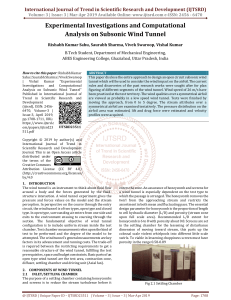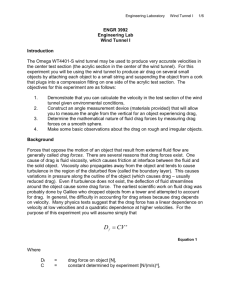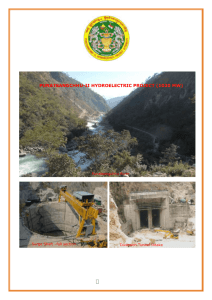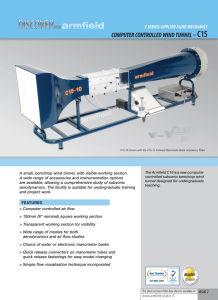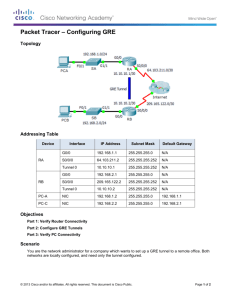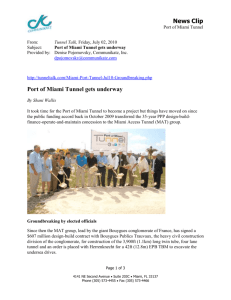Innovation Grant Building the Capacity to Incorporate Authentic
advertisement
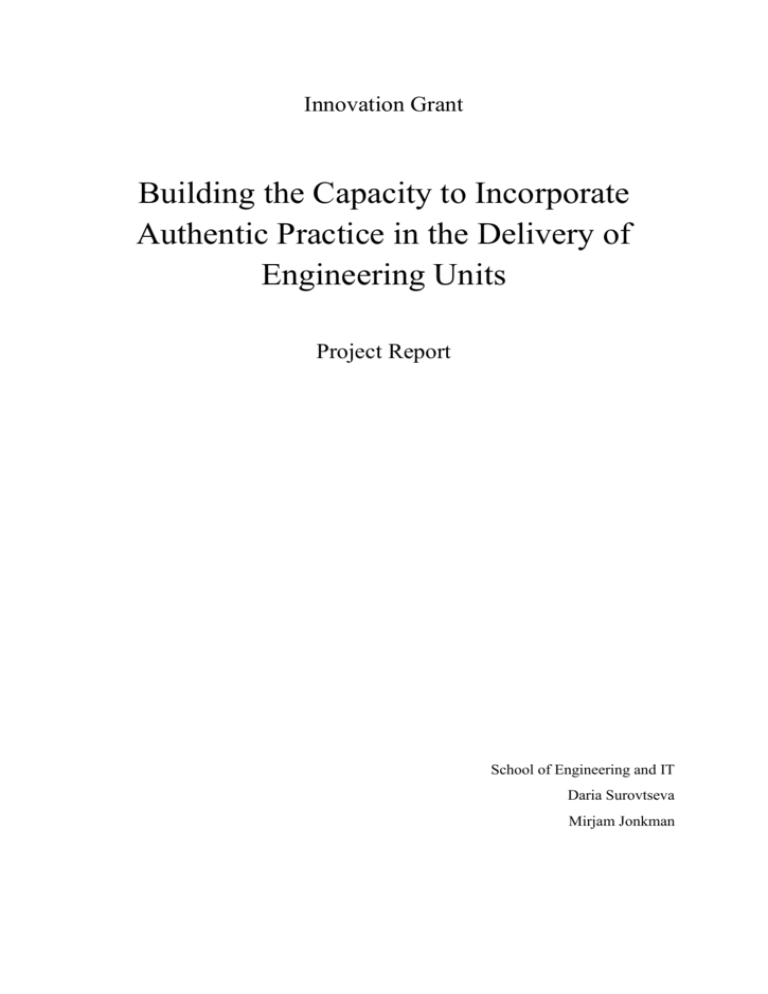
Innovation Grant Building the Capacity to Incorporate Authentic Practice in the Delivery of Engineering Units Project Report School of Engineering and IT Daria Surovtseva Mirjam Jonkman Background The new generation of engineers are expected to be able to conceive-design-implementoperate complex value-added engineering systems in a modern team-based environment (Crawley et al, 2007). It has been shown by many that the traditional lecture-based environment does not always provide a suitable framework to address this requirement. On the other hand, Project Based Learning (PBL) strategies have been developed over the years aimed at aiding the students with real-life applications. Although implementation of such techniques in specialist subjects involving high-end mathematics is somewhat limited, it is not impossible. In the beginning of 2012 a decision was made to review the teaching and learning strategies in Fluid Mechanics unit (ENG480) - the core unit in Mechanical Engineering stream. The subject deals with physical phenomena occurring when a fluid flows over bodies. Objects of interest include moving cars, flying airplanes, water-jets, and windmills. It was decided to offer the students projects involving design-build-test stages, where all testing is conducted in the wind tunnel. In 2013 the unit was first run in PBL mode, and although the lecturer received very positive feedback from the students, lack of appropriate instrumentation was identified as a major drawback. Not only the students had to address the objectives of the project, but also they had to design and set up some basic measurement system (Figures 1 and 2). This placed unnecessary pressure in terms of the additional workload on both the students and the lecturer. Additionally, given a very tight timeframe, the measurement system was not able to provide very accurate qualitative results. Figure 1 Balance to measure the vertical force (Lift). As the wind blows over the airfoil, it lifts, and the mass measured by the balance is directly proportional to the exerted force Figure 2 'Drag machine' for measurement of the force parallel to the flow. As the wind blows over the airfoil, the drag machine moves in the direction of the flow, and the amount by which the springs have stretched is directly proportional to the exerted force Purpose This aim of this project was therefore the development of a more suitable learning environment for authentic practice within Engineering through purchasing and installing additional equipment for the wind tunnel. Not only would this enhance the performance and expand the range of activities which can be performed using the wind tunnel, but also it would create new opportunities for research and innovation. Design and Implementation Two possible approaches were identified. First, a wind tunnel with all necessary measuring equipment could be purchased off the shelf (Figure 3). The major drawback of such approach was found to be the size of models which could be tested and the range of wind speeds which could be achieved. The wind tunnel shown in Figure 3, for example, would be suitable for a 10x15cm model, and would only allow wind speed of about 150km/hr. A larger wind tunnel could be found, however the cost would increase dramatically, quite possibly pushing AU$50,000. Additionally, CDU already has a working wind tunnel which compares well with equipment available in other Australian universities and overseas. The second option was therefore to purchase and install additional equipment required to advance it to a suitable level, and the associated cost was estimated to be AU$5500 at the most. Figure 3 Armfield low speed bench-top wind tunnel with optional accessories. Test section is 15cm in diameter (images taken from Armfield catalogue) Two undergraduate students selected this project as the focus of their research thesis. The aspects of the project included the force measurement, flow visualisation and measurement of pressure and temperature along the surface. Forces to be measured are drag – acting on the object in the direction of the airflow, and lift – acting in the direction normal to the flow (upwards). A two-component force balance was constructed which consists of a strut supported by two load cells orientated perpendicularly, and platform type linkages are used for decoupling of forces (Figure 4). Three different attachments have been manufactured to allow for testing of small and large bulk objects, and airfoil type models. Thermocouples are embedded within the flexible tubes of a 16-channel water-based manometer (Figure 5) which enables measurement of pressure and temperature distribution along the surface of the object providing the students with better understanding of fluid patterns. Additionally, a smoke wand was installed upstream of the test section to enable flow visualization (Figure 6). In conjunction with the manometer it provides test data of the boundary layer separation, stalling conditions, and vortex formation. Calibration was conducted on the well-described models with known characteristics and using digital gauges calibrated by the manufacturer. Figure 4 Two-component balance for simultaneous measurement of lift and drag (left – schematic, right – actual setup) Figure 5 Manometer rake for pressure measurement Figure 6 Demonstration of vortex shedding using constructed smoke wand Summary of Outcomes All installed equipment was used by the students enrolled in ENG480 during March-May 2014. Extensive testing of supersonic wind tunnel inserts, supersonic and subsonic airfoils, and axial fans was conducted. According to student feedback, the newly installed instrumentation helped in understanding of complex theoretical concepts which in turn inspired students to conduct further research in fluid mechanics, including industrial applications. The outcomes of this project have been also evaluated against the objectives set in the University strategic plan, and it was found that at least three points were addressed. A Unique Learning Environment has been created to improve student experiences and provide grounds for authentic practice within a highly theoretical engineering subject. In fact, this project has enabled an opportunity for cutting edge research into aerodynamics at CDU, addressing the objective of Research with global reach. At this early stage, a research group has already formed and began working on optimisation of body shapes for less energy consumption during movement (applications include cars, aircraft, submarines, and the like). This research involves the study of surface dimpling and has limited representation in the literature worldwide. Additionally, the facility has been already used to conduct workshops for school students. New equipment will enable more interactive and interesting demonstrations, which has potential to lead to higher HE student intake rate, and securing the future for both, School of Engineering and IT and the students.





